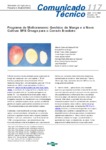Use este identificador para citar ou linkar para este item:
http://www.infoteca.cnptia.embrapa.br/infoteca/handle/doc/569409Registro completo de metadados
| Campo DC | Valor | Idioma |
|---|---|---|
| dc.contributor.author | PINTO, A. C. de Q. | pt_BR |
| dc.contributor.author | BRAGA, M. F. | pt_BR |
| dc.contributor.author | JUNQUEIRA, N. T. V. | pt_BR |
| dc.contributor.author | VARGAS RAMOS, V. H. | pt_BR |
| dc.contributor.author | FALEIRO, F. G. | pt_BR |
| dc.contributor.author | ANDRADE, S. R. M. de | pt_BR |
| dc.contributor.author | CORDEIRO, M. C. R. | pt_BR |
| dc.contributor.author | DIAS, J. N. | pt_BR |
| dc.contributor.author | LAGE, D. A. da C. | pt_BR |
| dc.date.accessioned | 2011-07-08T11:48:17Z | - |
| dc.date.available | 2011-07-08T11:48:17Z | - |
| dc.date.created | 2006-02-03 | pt_BR |
| dc.date.issued | 2005 | pt_BR |
| dc.identifier.citation | Planaltina, DF: Embrapa Cerrados, 2005. | pt_BR |
| dc.identifier.uri | http://www.infoteca.cnptia.embrapa.br/infoteca/handle/doc/569409 | pt_BR |
| dc.description | ABSTRACT: Mango (Mangifera indica L.) is one of the most important tropical fruits cultivated in Brazil with area higer than 70 thousand hectares, production of 970 thousand tones. However, it was exported only 13,4% of this production, which is equivalent to 130 thousand tones, in 2003. Mango production and exportation are mostly developed at tropical Semi-arid condition in Northeast Brazil, which concentrated 80% on a cultivar only, Tommy Atkins. This is very dangerous though if a severe disease occrus at this specific genotype, mango production may have a strong loss and, or the whole Brazilian mango area might be destroyed. This cultivar has some negative characteristics, such as high susceptibility to mango malformation and pulp breakdown as well as low fruit quality in terms of taste. The mango breeding program of Embrapa Cerrados has the objective to develop superior cultivars to Tommy Atkins on productivity, resistance to diseases, free of physiological disorders and better fruit taste. Roxa Embrapa 141, Alfa Embrapa 142, Beta and Lita were cultivars released between 1998 and 2002, which have excellent characteristics not only for fresh consumption, but also for processing industry. Recently, seven new mango hybrid selections were evaluated at Cerrados conditions and are also being evaluated on other Brazilian ecosystems, such as Semi-arid in Northeast Brazil, in order to evaluate the response of genotype to the new environment. The cultivar Ômega (hybrid selection CPAC 23/86) has shown a mean yield of 345 fruits/plant. this new cultivar has presented a red-purplish to red-yeloowish fruit, very sweet and firm pulp. In general, this new cultivar showed lower disease incidence and pulp breakdown, but better pulp quality than the two commercial mango cultivars Tommy Atkins and Heidi. This is the first report on the new mango cultivar BRS Ômega (Selection CPAC 23/86) developed by Mango Breeding Program of Embrapa Cerrados. | pt_BR |
| dc.language.iso | por | pt_BR |
| dc.relation.ispartofseries | (Embrapa Cerrados. Comunicado Técnico, 117). | pt_BR |
| dc.rights | openAccess | pt_BR |
| dc.subject | Melhoramento genético | pt_BR |
| dc.subject | Mango | pt_BR |
| dc.subject | Tropical fruits | pt_BR |
| dc.title | Programa de melhoramento genético da manga e a nova cultivar BRS Ômega para o cerrado brasileiro. | pt_BR |
| dc.type | Folhetos | pt_BR |
| dc.date.updated | 2011-07-08T11:48:17Z | pt_BR |
| dc.subject.thesagro | Fruta Tropical | pt_BR |
| dc.subject.thesagro | Manga | pt_BR |
| dc.subject.thesagro | Mangifera Indica | pt_BR |
| dc.subject.thesagro | Variedade | pt_BR |
| dc.subject.nalthesaurus | plant breeding | pt_BR |
| dc.subject.nalthesaurus | varieties | pt_BR |
| dc.format.extent2 | 8 p. | pt_BR |
| riaa.ainfo.id | 569409 | pt_BR |
| riaa.ainfo.lastupdate | 2009-10-27 | pt_BR |
| Aparece nas coleções: | Comunicado Técnico (CPAC)  | |
Arquivos associados a este item:
| Arquivo | Descrição | Tamanho | Formato | |
|---|---|---|---|---|
| comtec117.pdf | 274,29 kB | Adobe PDF |  Visualizar/Abrir |









